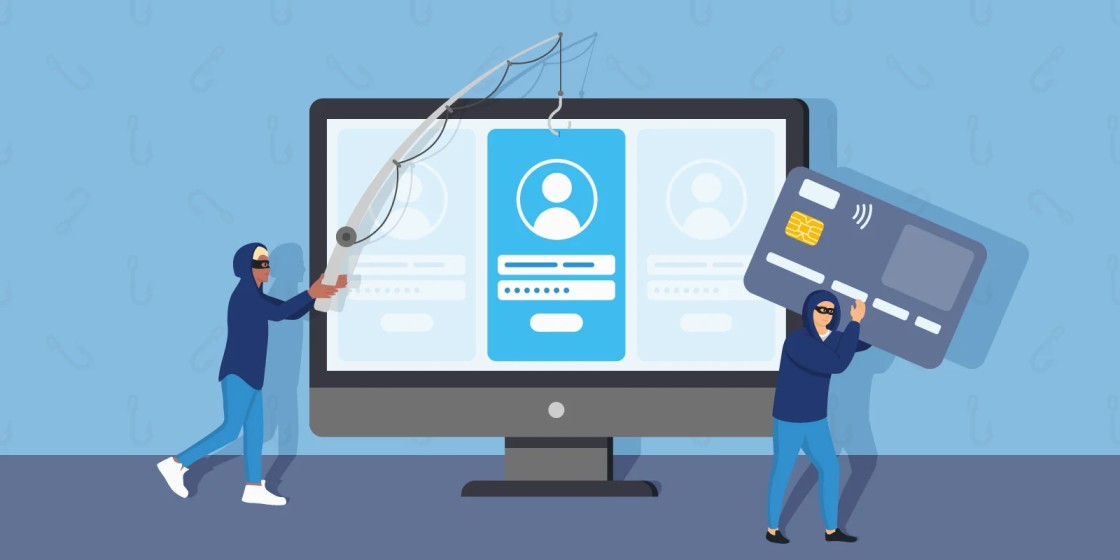
Fraudsters Step up Phishing Attacks on Bank Customers
- April 10, 2023
- 0
Phishing attacks on Bank customers continue as more victims express their shock and horror over the criminals’ growing confidence in their modus-operandi.
It has emerged that they may have now adopted a new modus-operandi to step up their game—donning the role of a protector. They are sending phishing links disguised as a verification process to fortify cybersecurity measures.
Fraudsters have created a fake HDFC Bank website, with a phishing link disguised as a verification process. The link is now being sent to HDFC customers.
At first stage, they warn people about their bank accounts being suspended and to update their know-your-customer (KYC) or PAN number through a link sent through an SMS before reopening them.
Interestingly, when customers reported this new fraud, two Twitter handles impersonating HDFC Bank and the @HDFCBank_Cares account immediately responded by asking them to contact a “secondary number”. These handles are also fake, indicating the speed at which fraudsters operate.
The HDFC Bank subsequently clarified that these account are not theirs. Bank has advised people not to click on the links sent through emails and SMSes.
The HDFC Bank NBFC arm confirmed the data leak that the hackers reportedly uploaded 7.5 GB of loan data of the HDFC Bank’s NBFC arm on the dark web.
Meanwhile, to clear customer concerns, the bank said its messages would come only from its official IDs, hdfcbk and hdfcbn, placed under http://hdfcbk.io. “Remember, the bank will never ask for PAN details, OTP, UPI, VPA / MPIN, Customer ID & Password, Card No, ATM PIN & CVV. Please do not share your confidential details with anyone,” the bank said.
In 2021-22, commercial bank data showed that around Rs 128 crore Indians were victims of fraud related to ATM/Debit cards, credit cards, and Internet banking.
Hence, check the sender’s identity before acting on any SMS request, report any doubtful SMSes, or confirm bank alerts with the bank manager to avoid online fraud.
Online banking should be protected by two-factor authentication. You must enter your password and OTP each time you access your account. A fingerprint can even be used as a second password. Do not click on unidentified links and delete such messages, including Blocking the sender.
जालसाजों ने बैंक ग्राहकों पर किया फिशिंग का हमला
बैंक के ग्राहकों पर फ़िशिंग हमले जारी हैं क्योंकि पीड़ितों ने अपराधियों के अपने बनाए हुए तौर-तरीकों में बढ़ते विश्वास पर अपना सदमा और आश्चर्य व्यक्त किया।
यह सामने आया है कि उन्होंने अब अपने खेल को आगे बढ़ाने के लिए एक नए तौर-तरीके को अपनाया हो सकता है – एक रक्षक की भूमिका निभा कर वे साइबर सुरक्षा उपायों को मजबूत करने के लिए सत्यापन प्रक्रिया के रूप में फिशिंग लिंक भेज रहे हैं।
धोखाधड़ी करने वालों ने सत्यापन प्रक्रिया के रूप में एक फ़िशिंग लिंक के साथ एक नकली एचडीएफसी बैंक वेबसाइट बनाई है। लिंक अब एचडीएफसी ग्राहकों को भेजा जा रहा है।
पहले, उन्होंने लोगों को उनके बैंक खातों को निलंबित किए जाने और उन्हें फिर से खोलने से पहले एक एसएमएस के माध्यम से भेजे गए लिंक के माध्यम से अपने ग्राहक को जानने (केवाईसी) या पैन नंबर को अपडेट करने के बारे में चेतावनी दी।
दिलचस्प बात यह है कि जब ग्राहकों ने इस नए धोखाधड़ी की सूचना दी, तो एचडीएफसी बैंक और /HDFCBank_cares खाते का प्रतिरूपण करने वाले दो ट्विटर हैंडल ने तुरंत “द्वितीयक नंबर“ से संपर्क करने के लिए कहा। ये हैंडल भी नकली थे, जो धोखेबाजों की गति को दर्शाता है।
एचडीएफसी बैंक ने बाद में स्पष्ट किया कि ये उनके नहीं हैं। बैंक ने लोगों को ईमेल और एसएमएस के जरिए भेजे गए लिंक पर क्लिक न करने की सलाह दी है।
एचडीएफसी बैंक एनबीएफसी शाखा ने डेटा लीक की पुष्टि की है कि हैकर्स ने कथित तौर पर एचडीएफसी बैंक की एनबीएफसी शाखा के 7.5 जीबी ऋण डेटा को डार्क वेब पर अपलोड किया है।
इस बीच, ग्राहकों की चिंताओं को दूर करने के लिए, बैंक ने कहा कि उसके संदेश केवल उसकी आधिकारिक आईडी, hdfcbkऔर hdfcbn से आएंगे, जिन्हें http%@@hdfcbk-io के तहत रखा गया है। “याद रखें, बैंक कभी भी पैन विवरण, ओटीपी, यूपीआई, वीपीए / एमपीआईएन, ग्राहक आईडी और पासवर्ड, कार्ड नंबर, एटीएम पिन और सीवीवी नहीं मांगेगा। कृपया अपना गोपनीय विवरण किसी के साथ साझा न करें, ”बैंक ने कहा।
2021-22 में, वाणिज्यिक बैंकों के आंकड़ों से पता चला है कि लगभग 128 करोड़ भारतीय एटीएम/डेबिट कार्ड, क्रेडिट कार्ड और इंटरनेट बैंकिंग से संबंधित धोखाधड़ी के शिकार थे।
इसलिए, किसी भी एसएमएस अनुरोध पर कार्रवाई करने से पहले प्रेषक की पहचान की जांच करें, किसी भी संदिग्ध एसएमएस की रिपोर्ट करें, या ऑनलाइन धोखाधड़ी से बचने के लिए बैंक प्रबंधक से बैंक अलर्ट की पुष्टि करें।
ऑनलाइन बैंकिंग को दो-कारक प्रमाणीकरण द्वारा संरक्षित किया जाना चाहिए। हर बार जब आप अपना खाता एक्सेस करते हैं तो आपको अपना पासवर्ड और ओटीपी दर्ज करना होगा। एक फिंगरप्रिंट को दूसरे पासवर्ड के रूप में भी इस्तेमाल किया जा सकता है। अज्ञात लिंक पर क्लिक न करें और प्रेषक को ब्लॉक करने सहित ऐसे संदेशों को हटाएं।

































































